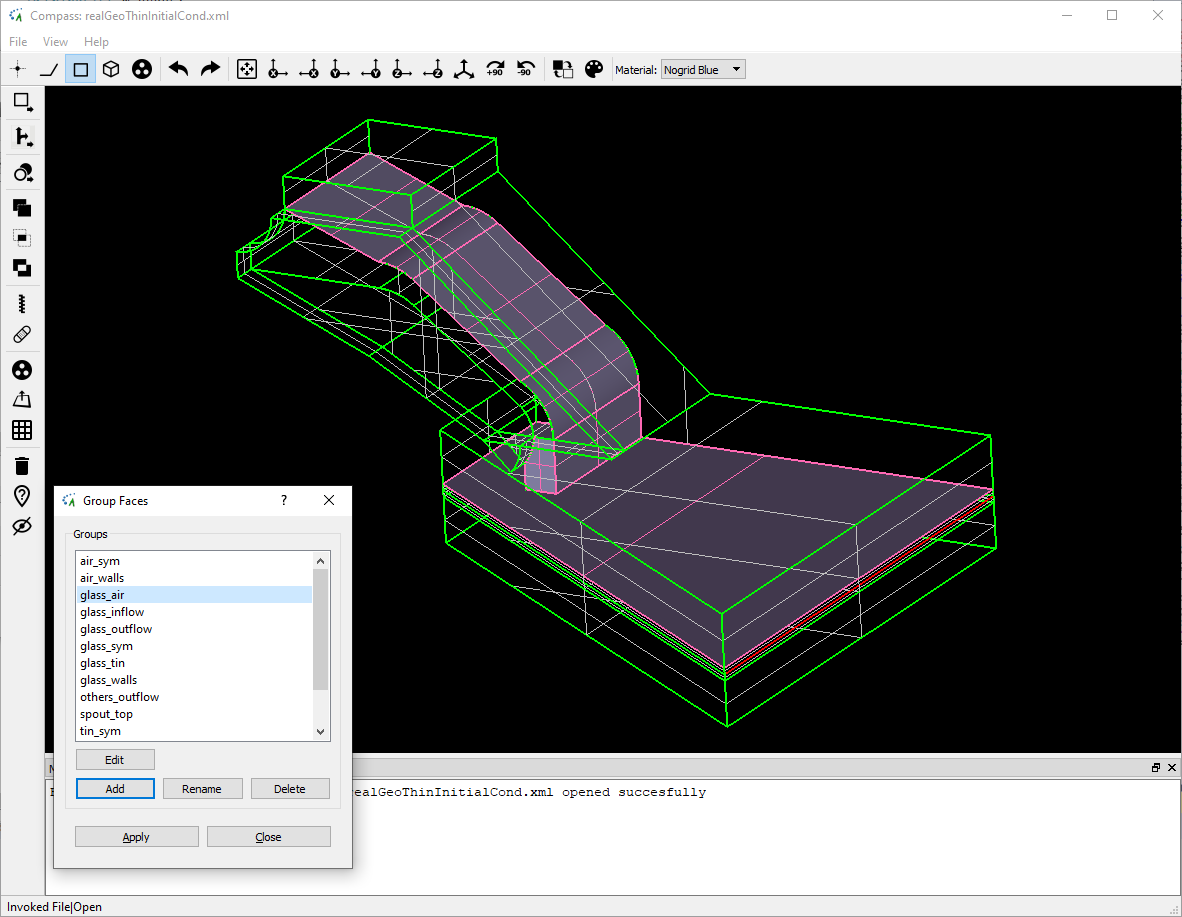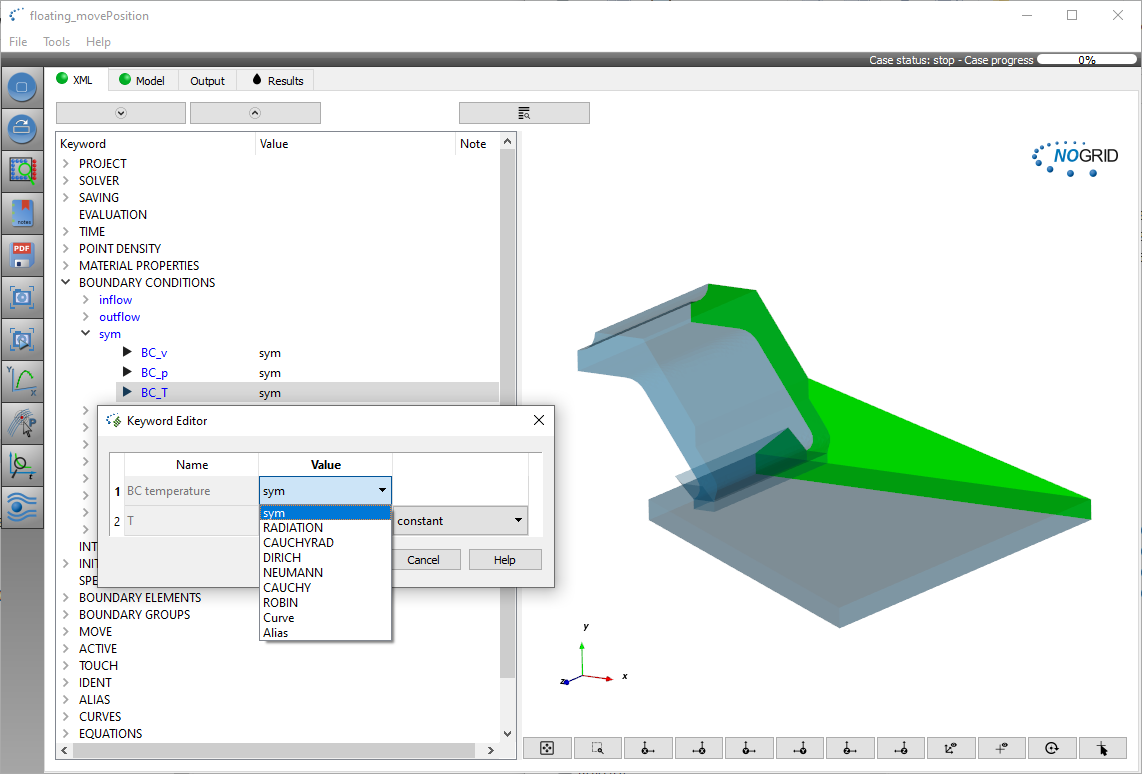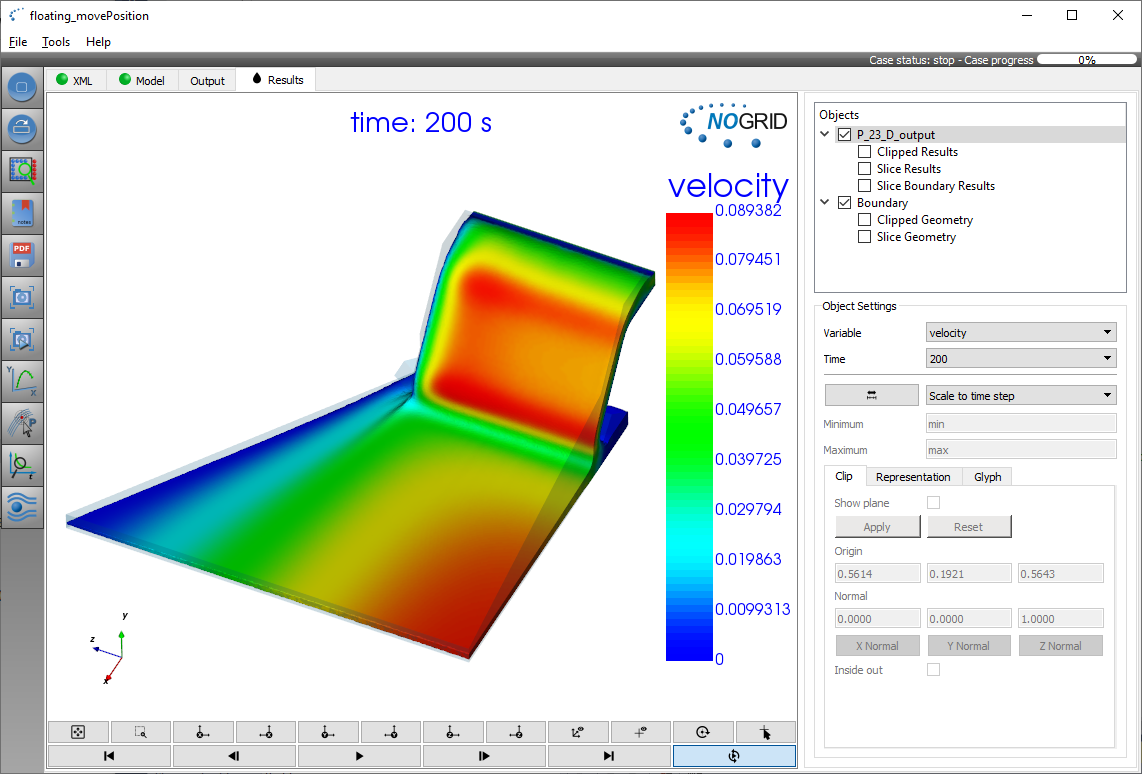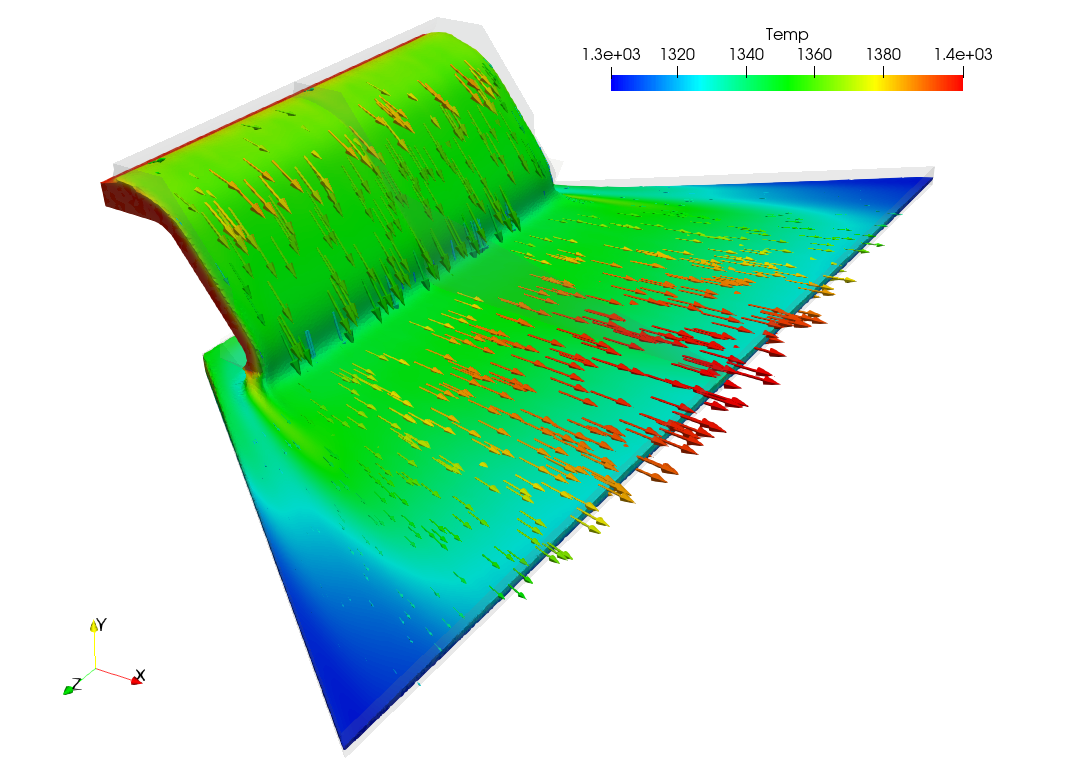Simulation Glass Floating
Simulation of glass floating is one of many glass simulation applications and can excellently be performed with the CFD software NOGRID points. This simulation software helps to produce high quality glass products free of defects by optimization of the floating process.
Float glass is produced by floating a continuous stream of molten glass onto a bath of molten tin. The molten glass spreads onto the surface of the metal and produces a high quality, consistently level sheet of glass that is later heat polished. The glass has no wave or distortion and is now the standard method for glass production; over 90% of the world production of flat glass is float glass. The float glass process was developed by Sir Alastair Pilkington and patented by Pilkington in 1959. The detailed history of the development is process is described by Sir Alastair Pilkington in his review lecture to the Royal Society of London in 1969 (Pilkington, L.A.B. Proc. Roy. Soc. London 1969, A314, 1-25).

Figure 1: Float process
If molten glass is poured onto a bath of clean molten tin, the glass will spread out in the same way that oil will spread out if poured onto a bath of water. In this situation, gravity and surface tension will result in the top and bottom surfaces of the glass becoming approximately flat and parallel. The molten glass does not spread out indefinitely over the surface of the molten tin. Despite the influence of gravity, it is restrained by surface tension effects between the glass and the tin. The resulting equilibrium between the gravity and the surface tensions defines the equilibrium thickness of the molten glass (T).
Simulation of free surface flow in the spout-lip-area
The glass comes from the furnace and flows over a 'dam' or spout-lip where the continuous stream of molten glass flows onto the bath of molten tin. The stream of glass is pulled along the top of the molten tin by haul-off conveyors at the end of the float area which transport the glass into the annealing area. With NOGRID points you can perform a simulation of this process: Figure 2 shows the simulation results of the complex free surface flow of the glass, which is poured onto the tin bath. The tin flow itself is not taken into account here, but we considered the buoyant force between glass and tin in the simulation. The result is that the glass is able to dip under the tin level. Especially in the vicinity of the lip it dips deeper in the tin bath.
At the start of the float area the molten glass spreads outwards with flat top and bottom surfaces and the thickness decreases towards the equilibrium thickness (T). The thickness can then be further controlled by the stretching effect of the conveyors as it cools until it reaches a certain temperature when it exits the float area and enters the annealing lehr. Whilst the equilibrium thickness is approximately 7 mm the process has been developed to allow the thickness being controlled between 0.4 mm and 25 mm. For thin sheets, the exit conveyor speed can be increased to draw the glass down to thinner thicknesses. This drawing down will also result in a decrease in the sheet width and to prevent unacceptable sheet width decreases edge rolls are used. Edge rolls grip the outer top edge of the glass and do not only reduce decrease in width but also help to reduce the thickness even further.
For thick sheets, the spread of the molten glass is limited by using non-wetted longitudinal guides. The glass temperature allows the spread remaining uniform and is reduced until the ribbon can leave the guides without changing dimensions.
Optimization of float glass process by using simulation
Numerical simulation of glass can help to deal the challenges of float glass production, e.g. the control of the thickness of the produced glass sheets. NOGRID points provides excellent simulation solutions for float glass companies and helps to optimize their floating processes.
- computation is in full 3D solving complete Navier-Stokes-Equations
- easy and intuitive setup of the FSI (Fluid-Structure-Interaction) case
- free definable material properties by equations or curves
- moving parts (like assist rollers) with a lot of moving features
- multi-phase flows and swimming bodies in the fluid (Fluid Structure Interaction, FSI)
Nogrid's strengths
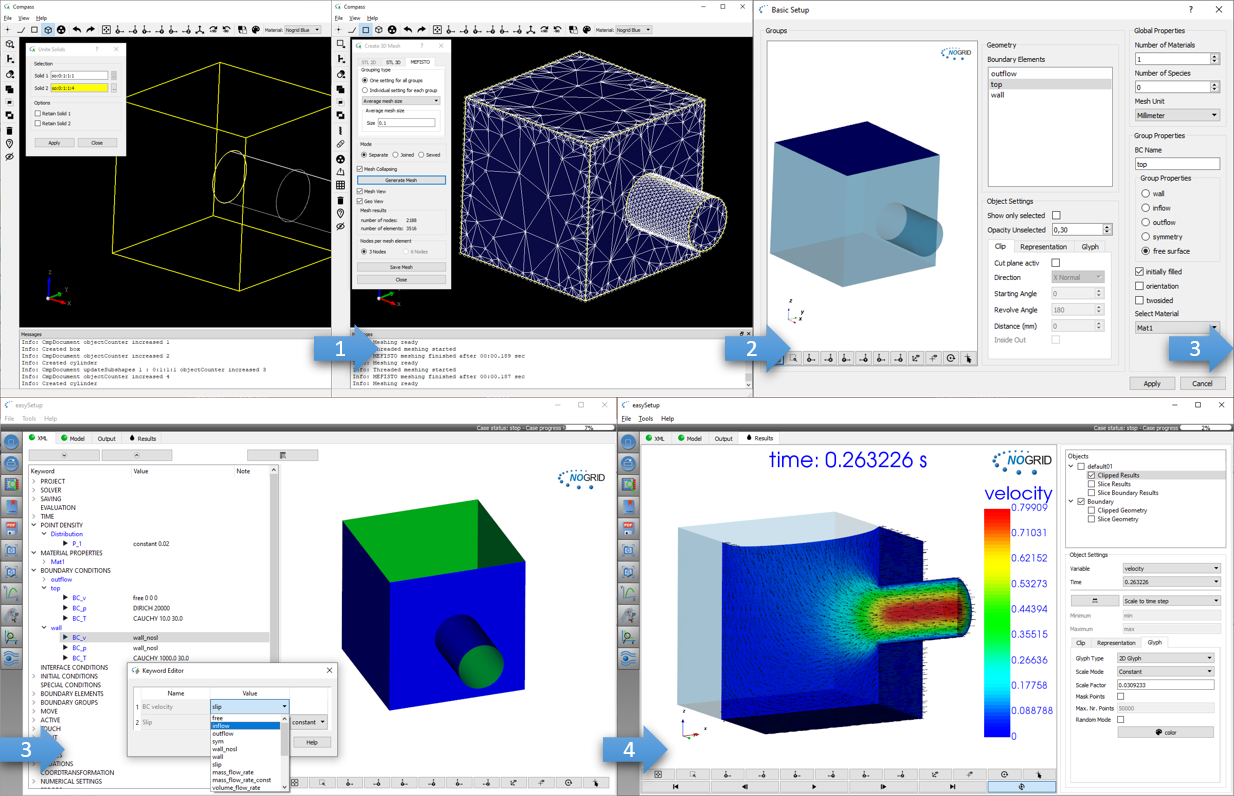
Easy and fast modelling: Build geometry, mesh boundary, setup the case and start computation
What is CFD from NOGRID?
CFD solves the fundamental equations that define the fluid flow process. With CFD software from NOGRID every engineer makes better decisions by predicting, analyzing and controlling fluid flow, heat and mass transfer or chemical reaction. By using NOGRID software for flow modeling you receive information on essential flow characteristics as for example flow distribution. Using it additional to testing and experimentation NOGRID software helps to improve the evaluation of your design – resulting in better construction and operation parameters, increasing planning security and money savings due to faster time to the marketplace for your product or process.
Choose NOGRID
With NOGRID, you choose professional CFD software and services – our aim is helping you to be successful. When you decide to work with NOGRID you choose close cooperation with a dynamic, flat hierarchies-organization. Short information channels result in quick and accurate professional support and service. Our team consists of highly qualified employees, who are experts in fields such as numerical simulation or computational fluid dynamics. Based on our know-how, we are pleased to offer the following services, responding to your individual requirements:
TRAINING
In our two-days training courses you will learn, how to use NOGRID CFD software efficiently. Our technical support team will teach you how to handle and solve different cases.
For more details please refer to Training Courses →
Technical Support
We offer full professional support from the minute you start using our software, by telephone or by email. Contact us, when ever needed.
For more details please refer to Software Support →
Service
Lack of time or resources and other constraints often make outsourcing an attractive solution. We help you with your flow modeling needs. Based on our engineering expertise in this field we offer individual numerical simulation services matching the unique needs of your organization.
For more details please refer to Simulation Services →

